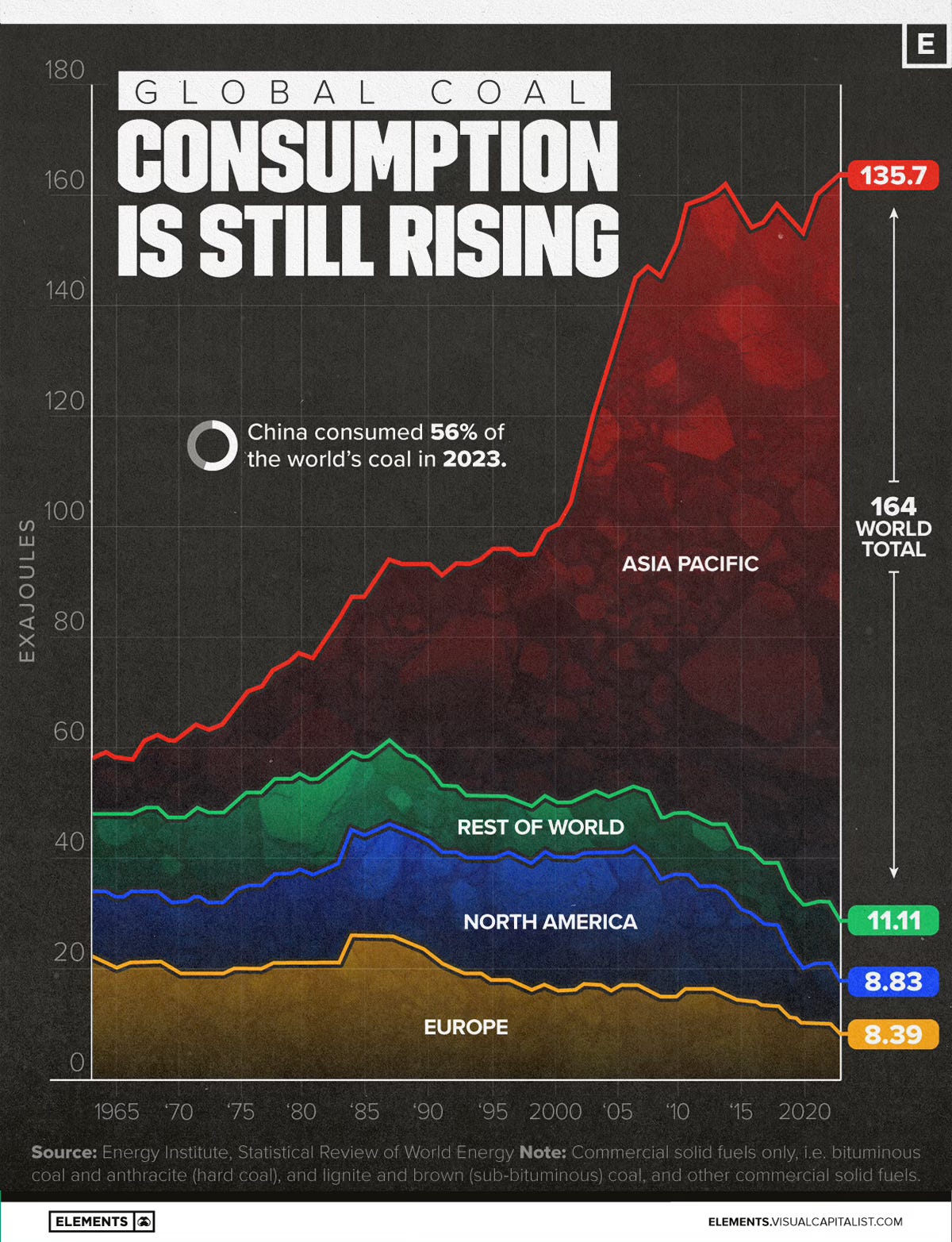Global coal consumption is still rising
Five charts to start your day
This is a topic everyone is familiar with: global coal consumption is on the rise. A significant portion of that increase is coming from China. However, the story is more complex than meets the eye. While it’s true that China has rapidly increased its coal consumption, it’s partly because the country hasn’t been able to transition quickly enough to greener and cleaner energy sources. In fact, China has one of the most ambitious renewable energy plans in the world and has pledged to become carbon neutral by 2060.
It’s important to note that the target date I’ve quoted is 2060, not 2050. This is arguably a more realistic deadline for an emerging nation like China, which, unlike many developed markets in the West, has much more to clean up.
For decades, China has been the workshop of the world, allowing us to export our carbon emissions in exchange for cheap, Chinese-made goods. It's also partly the reason why the United States for decades enjoyed low inflation until the trade war with China. They had been exporting their inflation to China for decades without realising it.
In short, China has needed vast amounts of energy to meet our needs, while simultaneously working to emerge as a global economic power.
I like to view this situation more like a balance sheet. If coal consumption and carbon emissions decrease in one place, they often need to rise somewhere else in our globally interconnected economy. This is the only way we can maintain and grow the global economy.
The alternative, of course, is to innovate and expand the availability of alternative energy supplies including renewable energy. But as we all know, this transition takes decades and likely won’t be complete within our lifetimes. It’s easy to criticise China without considering our own behaviour – namely, our consumption habits.
Source: Visual Capitalist
Coming up:
Could the reverse repo market be about to dry out?
Implied volatility in the oil market is set to surge
Real returns of the S&P 500 with dividends reinvested (1870-today)
The companies most impacted by the US port strikes
If you like the sound of that line up, this is usually a paid newsletter. You basically get all my best ideas daily. Hit the subscribe button if you are interested and this will be sent to your inbox daily.




